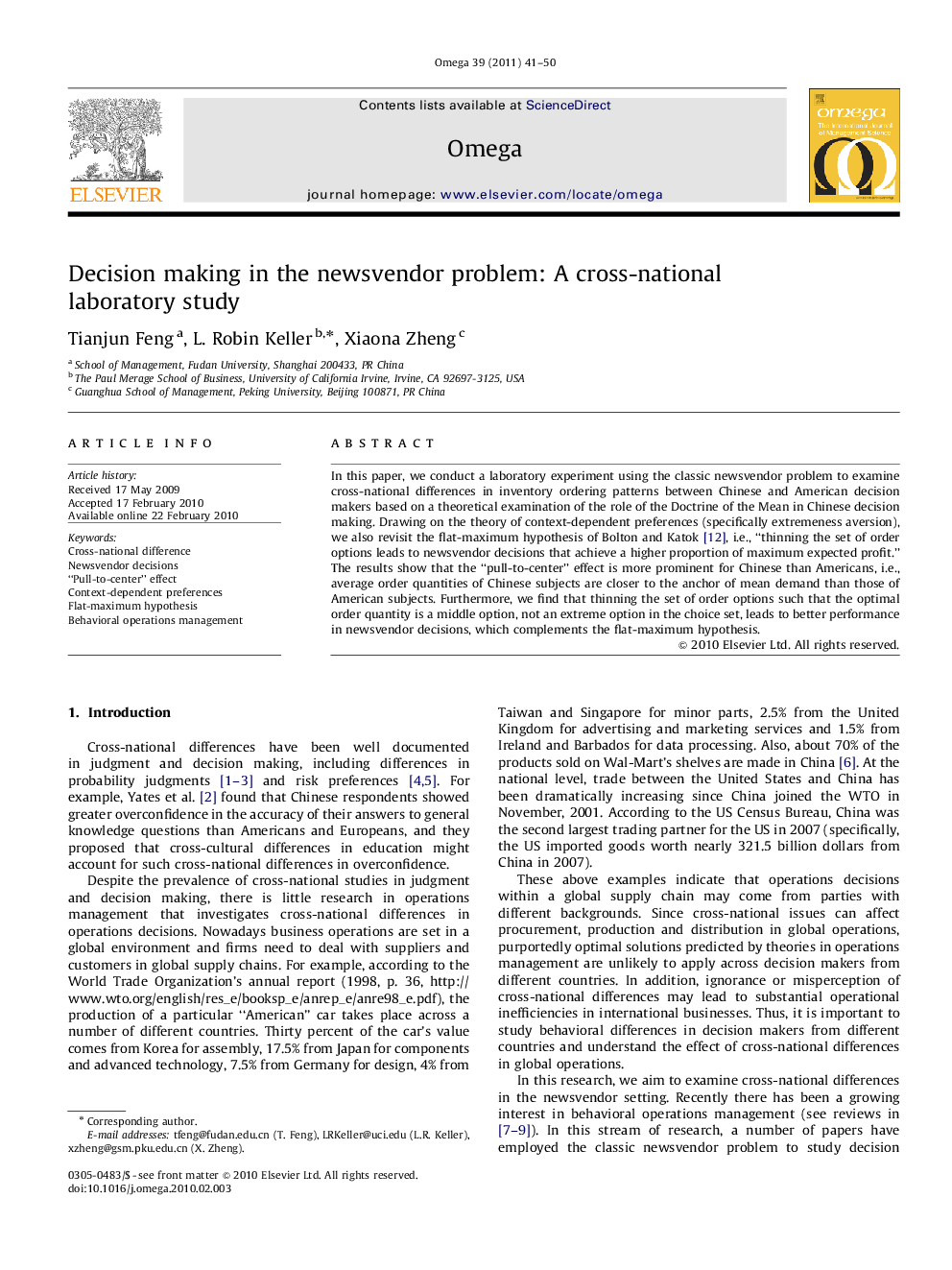| Article ID | Journal | Published Year | Pages | File Type |
|---|---|---|---|---|
| 1032936 | Omega | 2011 | 10 Pages |
In this paper, we conduct a laboratory experiment using the classic newsvendor problem to examine cross-national differences in inventory ordering patterns between Chinese and American decision makers based on a theoretical examination of the role of the Doctrine of the Mean in Chinese decision making. Drawing on the theory of context-dependent preferences (specifically extremeness aversion), we also revisit the flat-maximum hypothesis of Bolton and Katok [12], i.e., “thinning the set of order options leads to newsvendor decisions that achieve a higher proportion of maximum expected profit.” The results show that the “pull-to-center” effect is more prominent for Chinese than Americans, i.e., average order quantities of Chinese subjects are closer to the anchor of mean demand than those of American subjects. Furthermore, we find that thinning the set of order options such that the optimal order quantity is a middle option, not an extreme option in the choice set, leads to better performance in newsvendor decisions, which complements the flat-maximum hypothesis.
